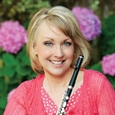There are many things to consider when you decide to purchase a piccolo. Start with where you will play this new instrument – exclusively indoors in a concert hall or outdoors for marching band. Price is the second consideration. You will want to try instruments within, not above, your price range. Students who try instruments that considerably more expensive than they can realistically afford often experience some disappointment when they find an instrument in their price range. All of the other factors in making a decision about what piccolo to buy hinge on these two basic pieces of information.
Price
I like to use the analogy of buying a car. Let’s say that you have about $20,000 to spend on a car. Desired features include air conditioning, a great sound system, and leather seats. There will be several makes and models that have these options in that price range, new or used, or you can buy a top-of-the-line luxury car with the same options for a little over twice the price. The difference in price range might reflect the amount of hand finishing work that has been done and the attention to detail.
The prices of professional piccolos reflect the same kind of attention to detail and hand finishing as luxury cars, so they carry a much higher price tag than student models. However, you should be able to find a piccolo with options you might want (such as a split-E key or a wing-style mouthpiece) no matter what your price range happens to be. There are many manufacturers that cater to every budget size in today’s marketplace, and if you consider pre-owned piccolos, your choices expand even further.
Materials
Piccolos are made out of three basic materials: Resin, (or composite/plastic), metal (solid silver or silver plate), and wood, (grenadilla being the most common). Resin instruments are a good choice for marching band as are metal piccolos because they are not weather sensitive. Grenadilla wood (or one of the other hardwoods) is the preferred choice of many professionals who feel that wooden instruments have a sweeter quality that blends equally well with strings and woodwinds.
If you plan to play in a situation other than a marching band, try to purchase the best quality wooden piccolo that you can afford. You will be rewarded with tonal colors not possible from piccolos made from other materials.
Headjoint Style
It is possible to find piccolos with metal headjoints on composite or wooden bodies. Some professional manufactures even offer gold headjoints. Many novice piccolo players prefer metal headjoints because their lip plates feel familiar to blow across. It takes a little practice to be able to blow across the piccolo’s more ‘naked’ embouchure hole. The popular wave-style lip plates can also help players feel more secure. They are a great option in a step up piccolo.
Bores
There are two types of bores: conical and cylindrical. Bore shape refers to the shape of the tube inside the piccolo and applies to both the headjoint and the body. It is possible to have an instrument with a conical (think cone shaped or tapered) body with a cylindrical (straight or cylindrical) headjoint, or a cylindrical body with a conical head. A cylindrical bore allows an easier response, especially in the third octave, but the lower octaves can have a much thinner tone.
A conical bore piccolo has a uniform, even response throughout the registers and is more practical all the way around. Most professional model wood piccolos have conical bores.
It is important to find an instrument that works for you. Try more than one headjoint in any one style just as you would if shopping for a flute. The head is the heart of the instrument and responsible for about 90% of the quality of the sound and response. The head joint needs to fit snugly into the body and the embouchure hole should be smooth and free from any sharp or rough edges.
The piccolo’s key mechanisms should be light and smooth: I prefer very light spring tensions as I do not use much finger pressure on the keys.
Make sure that the pads are flat and almost flush with the key cups: they should never hang down into the tone holes. When they do, pitch, tone quality, and response will all be compromised. My trill keys have cork pads so they are less likely to fill with water. This is necessary because those keys are at the top of the tube. Cork pads are a great option if you have problems with too many bubbles of water in these tiny keys.
If you are new to the piccolo, you may want to bring along a more experienced colleague or your teacher to help you try out instruments. I like to play short excerpts in each register, legato (all slurred) as well as articulated passage, so I can learn about the colors and response of a given instrument. It helps to have a tuner handy as well so you are able to assess the scale of a given instrument. I prefer piccolos pitched to A=442.
These tips should help you work through the myriad of choices as you piccolo shop; your goal is to find an instrument you will enjoy for years to come.






